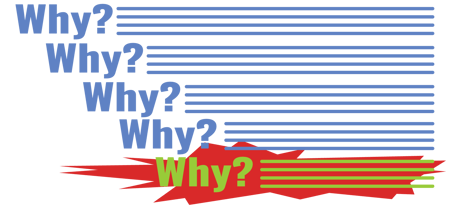All problem-solving, regardless of the method, should be grounded in evidence-based cause-and-effect. Cause Mapping® root cause analysis is a first principles approach that creates a diagram showing how the different parts of an issue fit together. The Cause Map™ diagram is a byproduct of systematic analysis (Step 2). It is also the platform for proposing and evaluating different solutions to select the best ones (Step 3). Instead of using several different methods, our clients consider Cause Mapping root cause analysis to be the stable reference point for problem-solving. Here’s how it relates to each of the tools:
FMEA
An FMEA looks to the future to consider different ways (failure modes) that a system or equipment could fail. All the causes and their effects are organized in a table format so that a Risk Priority Number (RPN) can be estimated for each failure mode. That table is then re-sorted to identify the highest-risk failure modes. An action plan, containing solutions, is then identified to reduce the risk of those failure modes. There is now a new set of “high” RPNs. And the process can continue again depending on what risk level is acceptable to the organization.
Cause Mapping Explanation – For our clients that have used FMEA, we build the FMEA table and a Cumulative Cause Map (a diagram of all the cause-and-effect relationships that COULD happen) in the same Microsoft® Excel® file. The FMEA table, with the RPN, and the Cause Map diagram are in one document. We show organizations how to capture all failure modes in one Excel® file over the life of the equipment. Capturing what’s in people’s heads before they retire is an important aspect of business continuity. This is a link to an article explaining FMEA and Cause Mapping root cause analysis.

Kaizen
Kaizen, or Kaizen events are typically looking at work processes or operations that need to be improved. It is a continuous improvement effort that is driven by the team members familiar with that operation.
Cause Mapping Explanation – The solutions developed when reviewing a Cause Map diagram are either related to equipment and operations (Engineering Controls) and/or changes in the way people perform work (Administrative Controls). Each Cause Map diagram builds backward from a negative outcome, problem or situation. By continuing to ask Why questions the map reveals how an organization’s work processes contributed to the issue. This allows people to see the roles that equipment issues and work processes play within a specific problem. Our clients use Cause Map diagrams to reveal breakdowns in their processes. The key, as with a Kaizen event, is to involve the people familiar with the operations.
Traditional Root Cause Analysis
Traditional root cause analysis has led people to believe that there are special causes called root causes that are different than other types of causes. This results in people arguing about “what caused the issue.”

Cause Mapping Explanation – A Cause Map investigation identifies the causes of a problem - not "the cause." This allows for more specific, detailed, accurate, evidence-based discussions. The premise that an incident has “one root cause” will limit the analysis and restrict the solutions. A Cause Map diagram levels the playing field to access all the information about how a problem occurred – from the frontline, technical leads, and management. Clients regularly tell us that Cause Mapping root cause analysis changes the way their people communicate details and uncover solutions.
A problem requires all the causes. And the most effective solution may be a combination of two or three different things. This is called layers of protection. This is an important aspect of risk mitigation within our approach which allows organizations to develop a shorter list of action items. In Cause Mapping root cause analysis, an incident with 15 causes doesn’t need 15 solutions. This is a common mistake organizations make. Two or three solutions may provide a significant reduction in risk. This is a shift for organizations that believe in the conventional model that a root cause analysis has "one root cause."
Conventional 5Whys
The explanation of Conventional 5Whys is a simple tool for the frontline to use on more basic problems. There is wide criticism of conventional 5Whys because people consider it to be too simplistic and not scientific. The point most often cited as a criticism of 5Whys is that three different people can make three different 5Whys. Their conclusion is that because three people made three different 5Whys, it’s obviously not repeatable, and therefore not scientific.

Cause Mapping Explanation – An electrician, a mechanic and an operator have expertise in different areas. Fortunately, they don’t see problems the same way. With Cause Mapping root cause analysis, it’s normal and expected to get three different 5-Whys. Having three different 5-Whys is evidence that the incident has more than five causes. Because people have different areas of expertise, they see different causes. Each person can provide an incomplete but accurate explanation of the issue. A Cause Map™ diagram shows how three different 5-Whys build into one more complete 9- or 10-Why. This gives everyone a more thorough understanding of the issue along with a broader range of solutions. Input, insight, and ideas from the frontline are part of building an accurate Cause Map. This blog explains how to build a 5-Why Cause Map diagram.

If you’d like further clarification or a demonstration, we are happy to coordinate a discussion to guide you through our approach across various issue types: FMEA, Troubleshooting, Process Improvements, Safety Incidents, Equipment Failures, or Production Outages. Contact our office for an overview of our approach or let us know if you need help dissecting and solving a specific problem.












